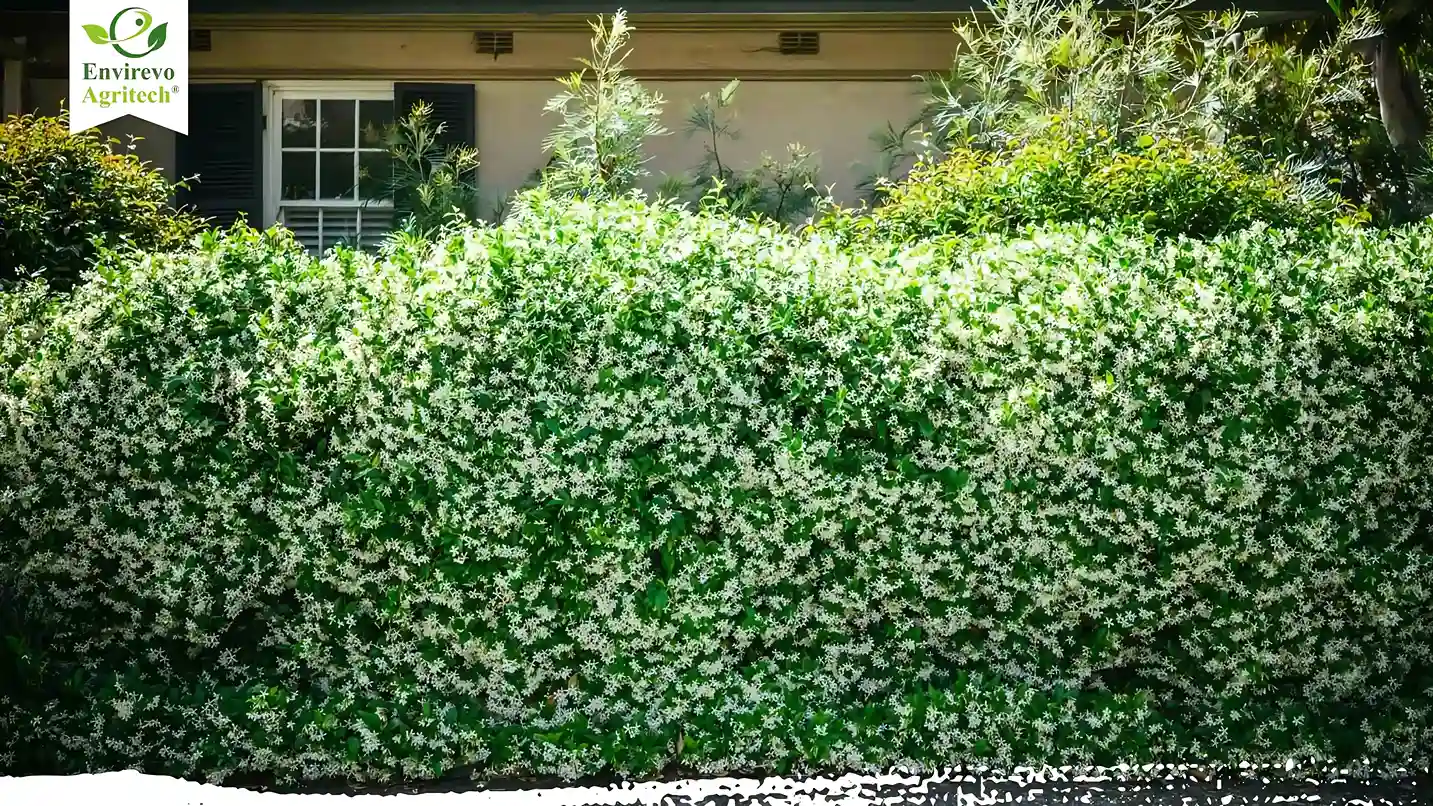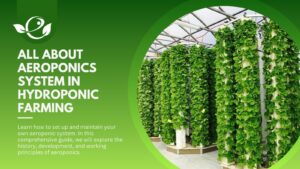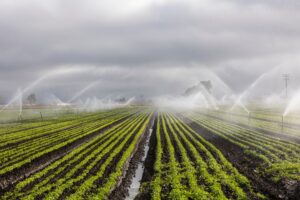Table of Contents
A living fence is more than just a boundary—it’s a sustainable, vibrant, and multifunctional addition to your landscape. Whether you’re aiming to enhance privacy, delineate property lines, or add aesthetic appeal, a living fence offers a green solution that evolves and thrives over time. In this comprehensive guide, we’ll explore the steps to create your own living fence, from planning and plant selection to maintenance and benefits.
🌱 What Is a Living Fence?
A living fence is a barrier composed of closely planted shrubs, trees, or other vegetation that grows together to form a dense, natural wall. Unlike traditional fences made of wood or metal, living fences are dynamic, providing ecological benefits and aesthetic value.
Benefits of a Living Fence
- Privacy: Creates a natural screen that can be tailored to desired heights and densities.
- Aesthetics: Offers seasonal interest with flowers, foliage, and textures.
- Environmental Impact: Supports biodiversity by providing habitats for birds, insects, and other wildlife.
- Durability: With proper care, living fences can last for decades.
- Cost-Effectiveness: Often more affordable over time compared to installing and maintaining traditional fences.
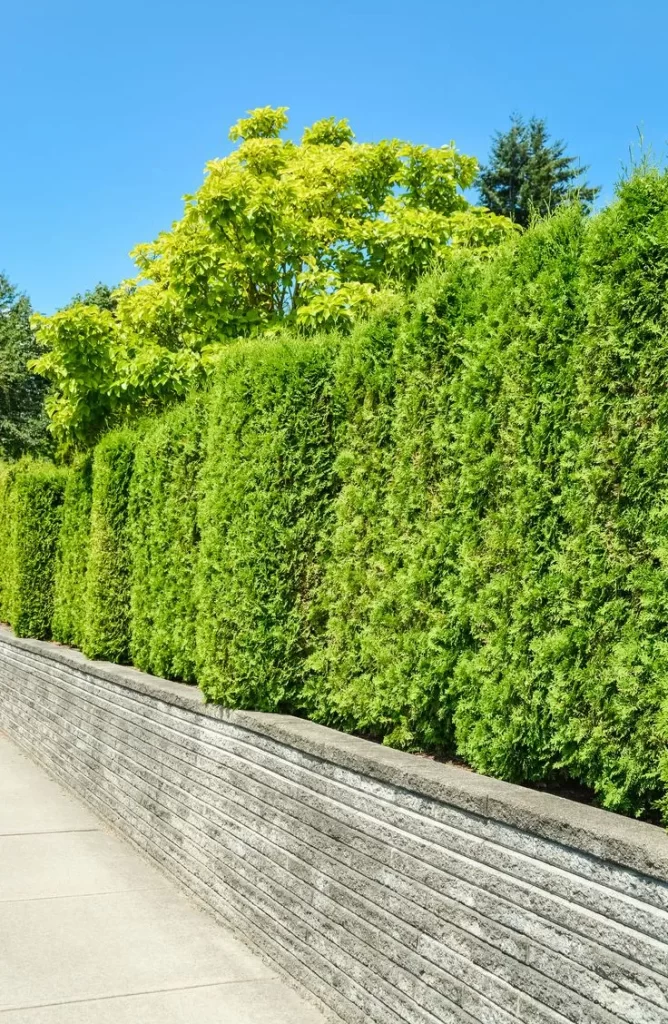
🛠️ Planning Your Living Fence
1. Define Your Purpose
Determine the primary function of your living fence:
- Privacy: Blocking views from neighbors or passersby.
- Windbreak: Reducing wind speed and protecting plants or structures.
- Aesthetic Appeal: Enhancing the visual landscape.
- Animal Containment: Keeping pets or livestock within boundaries.
2. Assess Site Conditions
- Sunlight Exposure: Note areas of full sun, partial shade, or full shade.
- Soil Type and Drainage: Test soil pH and drainage capacity.
- Climate Considerations: Choose plants suitable for your USDA Hardiness Zone.
- Space Availability: Consider the mature size of plants to prevent overcrowding.
3. Legal Considerations
- Property Lines: Ensure your fence is within your property boundaries.
- Local Regulations: Check for any restrictions on fence height or plant species.
- Tree Protection Orders: Be aware of protected trees that cannot be altered without permission.
🌿 Choosing the Right Plants for Your Living Fence
Selecting appropriate plants is crucial for the success of your living fence. Consider factors like growth rate, maintenance needs, and suitability to your local environment.
Evergreen Options
Provide year-round coverage and are ideal for privacy.
- Arborvitae (Thuja spp.): Fast-growing and dense; varieties like ‘Emerald Green’ are popular for hedges.
- Leyland Cypress (× Cuprocyparis leylandii): Rapid growth and tall stature make it suitable for quick privacy screens.
- Yew (Taxus spp.): Dense foliage and tolerance to pruning; ideal for formal hedges.
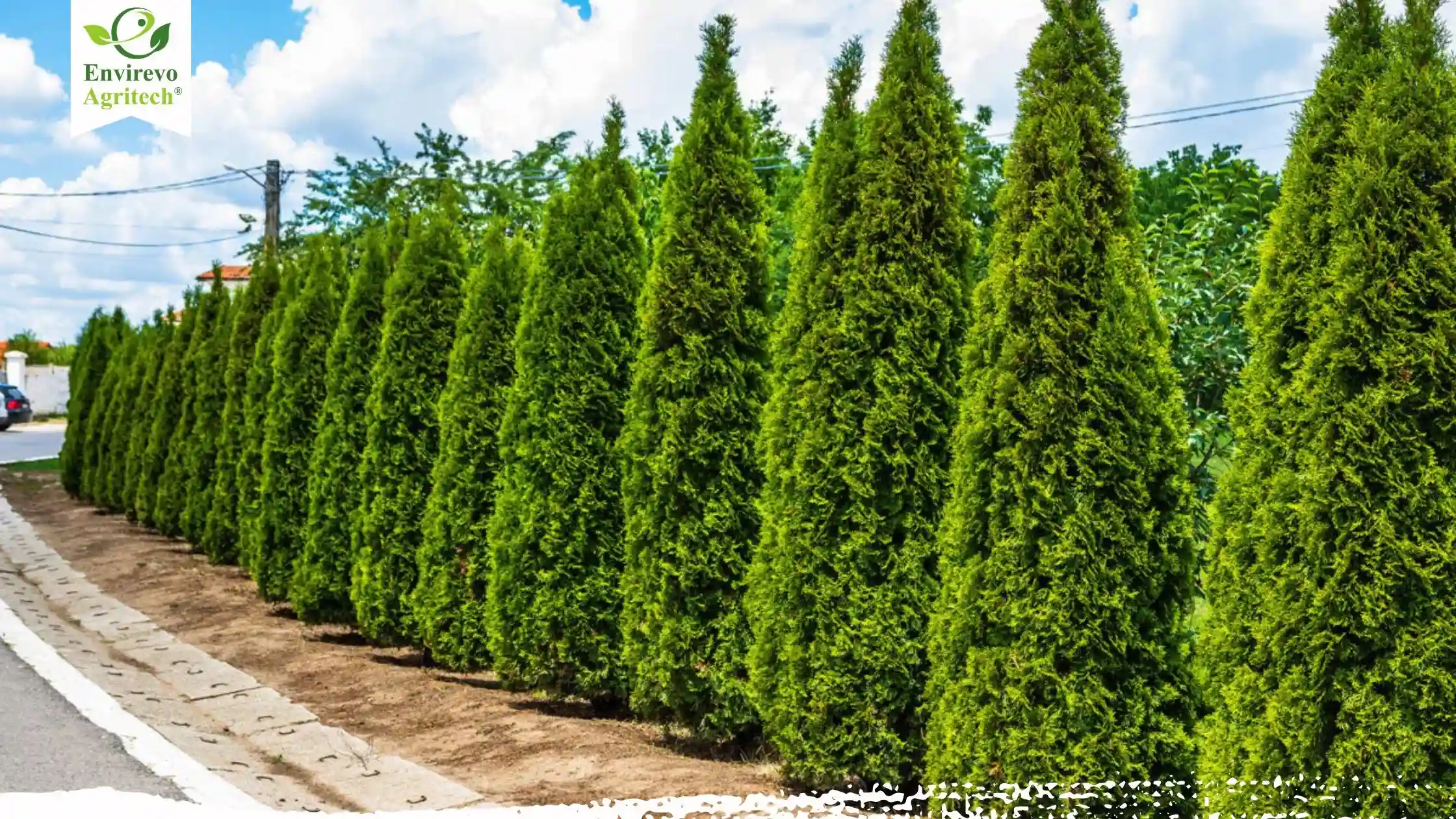
Deciduous Shrubs
Offer seasonal interest with flowers and foliage changes.
- Privet (Ligustrum spp.): Fast-growing with dense leaves; can be shaped easily.
- Forsythia (Forsythia spp.): Bright yellow flowers in early spring; grows quickly.
- Lilac (Syringa spp.): Fragrant blooms and attractive foliage.
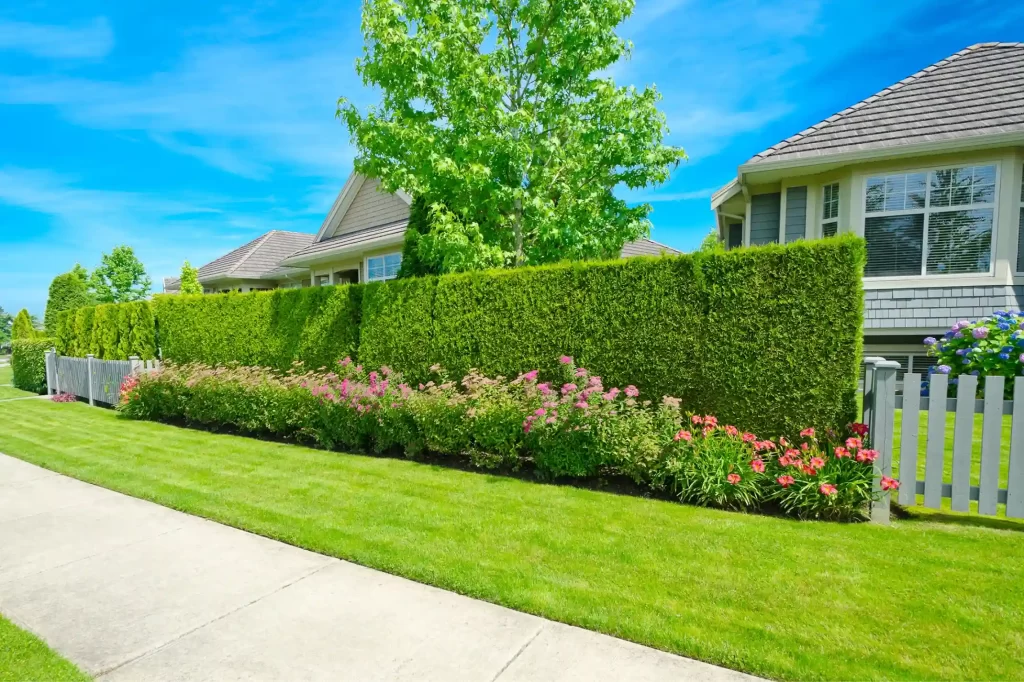
Flowering and Edible Options
Add beauty and functionality.
- Rose of Sharon (Hibiscus syriacus): Summer blooms and tolerance to various soils.
- Elderberry (Sambucus spp.): Edible berries and attractive flowers.
- Plum (Prunus spp.): Fruit-bearing with spring blossoms.
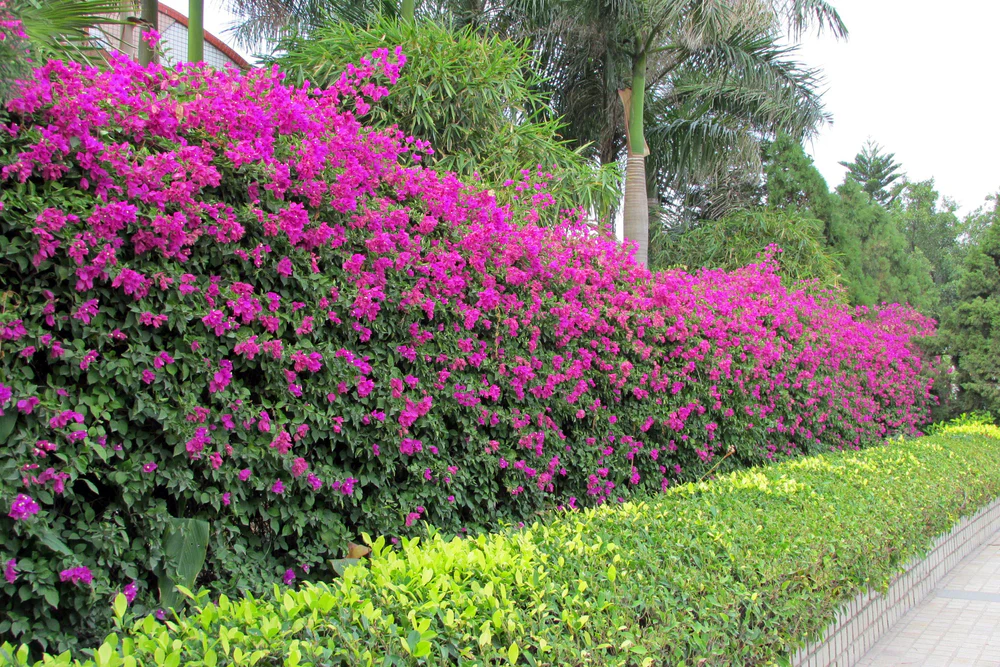
Fast-Growing Vines
Ideal for quick coverage on trellises or supports.
- Star Jasmine (Trachelospermum jasminoides): Fragrant flowers and evergreen leaves.
- Climbing Hydrangea (Hydrangea anomala petiolaris): Large, showy blooms and shade tolerance.
- Bougainvillea (Bougainvillea spp.): Vibrant bracts and drought resistance.
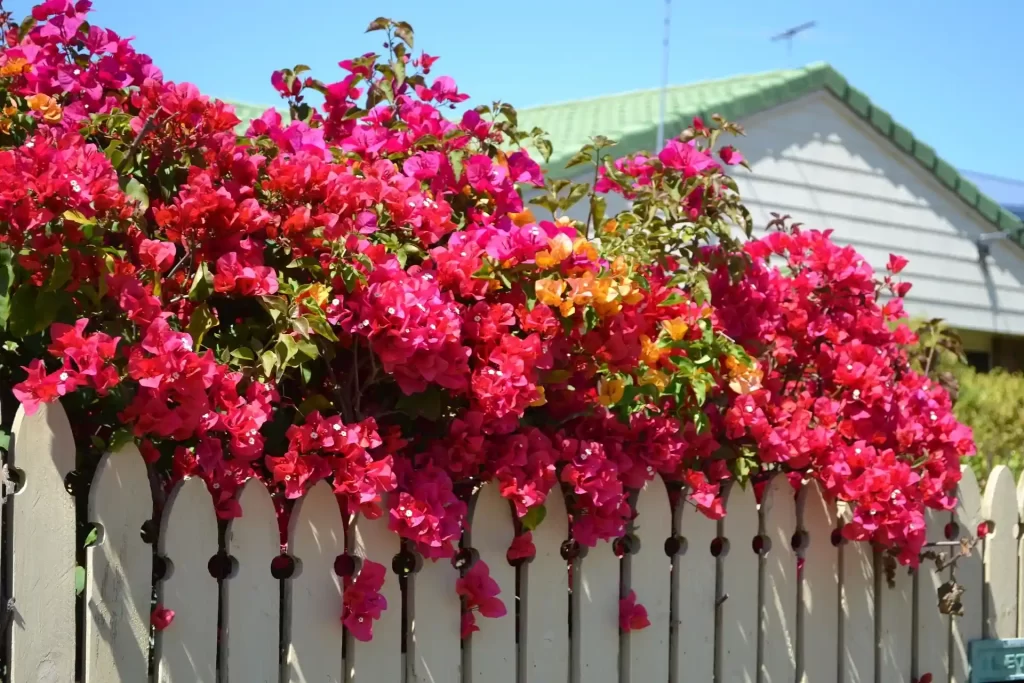
🌿 Step-by-Step Guide to Building a Living Fence
Preparing the Site
First, accurately measure the planned fence line to calculate the required number of plants and plan for a uniform arrangement. Use string, stakes, or spray paint to clearly define the planting zone. Eliminate all weeds, grass, and debris to minimize competition for essential resources. If the soil is dense or drains poorly, improve its structure and drainage by adding compost or sand. Thorough site preparation is crucial for establishing healthy plants and ensuring their sustained growth.
Amend the Soil
Enhancing soil quality is vital for the successful establishment of your living fence.
- Incorporate organic matter: Mix in compost, aged manure, or leaf mold to improve soil structure, aeration, and nutrient content.
- Adjust pH if necessary: Use lime to raise pH or sulfur to lower it, based on your soil test results.
- Improve drainage: For heavy clay soils, adding organic matter can enhance drainage and prevent waterlogging.
Planting
- Spacing: Plant seedlings or cuttings at intervals suitable for the chosen species, typically 1 to 3 feet apart. Follow the mature spread of each species—generally 1–3 ft for shrubs, 3–5 ft for small trees, and 2–3 ft for vines on a trellis.
- Planting depth: Ensure each plant is set at the correct depth, with roots fully covered and the base at soil level. Dig holes twice as wide and equal depth to each root ball; roughen sides to prevent “glazing” and encourage root penetration.
- Backfill mix: blend native soil with amendment (50:50) and gently firm around roots, avoiding air pockets.
- Watering: Saturate the soil until water seeps from the base; repeat once more after a few hours to ensure deep moisture.
Initial Maintenance
- Mulching: Apply a 2–3 in layer of organic mulch, keeping it 2 in away from stems/trunks to prevent rot.
- Watering schedule: Maintain consistent moisture, especially during the establishment phase.
- Support structures: Install temporary fencing or tree guards to shield against rabbits, deer, or accidental lawn-equipment damage.
Ongoing Maintenance
Consistent care ensures density, health, and longevity of your living fence.
- Watering schedule: maintain weekly deep watering during dry spells, tapering frequency after the first 2–3 seasons.
- Fertilization: Annual application of balanced, slow-release organic fertilizer (e.g., 5-5-5 NPK) in early spring promotes lush growth without excessive legginess.
- Pest & disease monitoring: scout monthly for aphids, scale, fungal issues; apply organic controls (e.g., neem oil, insecticidal soap) as needed.
- Weeding: keep the root zone clear of competing plants; shallow cultivation or spot herbicide use can be effective.
Annual Pruning & Shaping
A well-timed trim maintains form, encourages density, and extends the life of your fence.
- Timing: Prune deciduous hedges in late winter before bud break; evergreens can be lightly shaped in late spring after new growth.
- Technique: Use sharp hedge shears or loppers; trim no more than one-third of annual growth to avoid stress.
- Espalier options: For flowering or fruiting species, train branches horizontally on wires to create a formal living fence with ornamental or edible yields.
Troubleshooting Common Issues
Even the best-laid plans can encounter challenges—stay alert and adapt promptly.
- Uneven growth: Adjust pruning to balance sunlight exposure; thin overcrowded areas to allow interior branching.
- Gaps in coverage: Plug holes with bareroot plants or encourage lateral growth by tipping branches toward empty spots.
- Soil compaction: Aerate with a garden fork or soil-welcoming organisms (e.g., earthworms) to relieve compaction and improve root health.
- Invasive spread: For species prone to self-seeding, deadhead flowers before seed set and remove suckers promptly.
✂️ Creative Pruning Techniques for Shaping Your Living Fence
1. Espalier Walls
Train your hedge into a flat, two-dimensional “wall” against a fence or trellis.
- How to
- Install horizontal wires or a trellis every 12–18″ up the desired height.
- Select young, flexible shoots and tie them gently to the lowest wire.
- As they grow, prune side shoots back to two or three buds, encouraging laterals to run along the next wire.
- Maintain form by trimming new growth back to the wire each season.
- Why it works
Espaliering maximizes sun exposure, speeds fruit ripening (on fruiting hedges), and creates a living “hedge panel” that’s as functional as it is decorative.
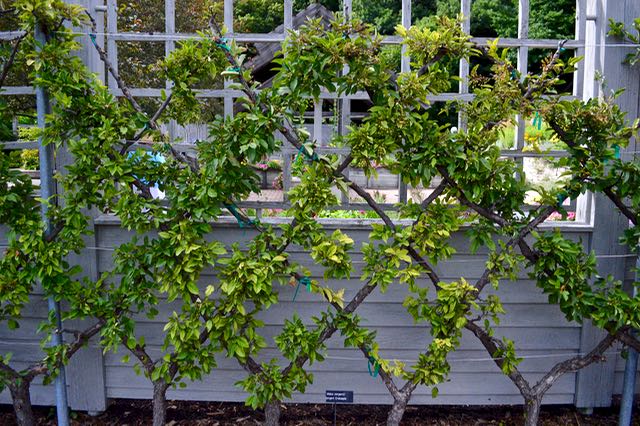
2. Pleaching & Raised Walkways
Create an elevated “living canopy” above a pathway or boundary.
- How to
- Plant trees (e.g., hornbeam, beech) 2–3 ft apart in a straight line.
- Over their first 2–3 seasons, remove all lower side shoots up to about 5 ft high.
- Tie the main trunks upright and prune tops to a uniform height.
- Train new side branches horizontally between trees, weaving them into a lattice.
- Why it works
The result is a dappled, green tunnel—perfect for garden paths or dividing large spaces—offering shade below and a living roof above.
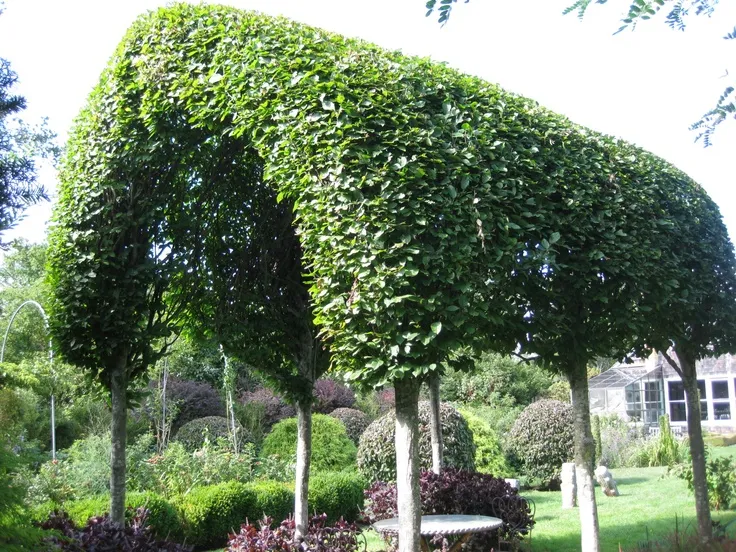
3. Cloud Pruning (Niwaki)
Borrowed from Japanese garden art, this technique sculpts foliage into soft “cloud” puffs.
- How to
- Identify key scaffold branches on your hedge.
- Trim secondary shoots close to the main limbs, leaving short stubs.
- Prune the stubs into rounded pads of foliage, spacing clouds 1–2 ft apart vertically and horizontally.
- Maintain by lightly shearing each cloud once or twice per season.
- Why it works
Cloud pruning transforms a plain screen into a series of floating green islands, adding whimsy and sculptural interest—especially striking on evergreen hedges.
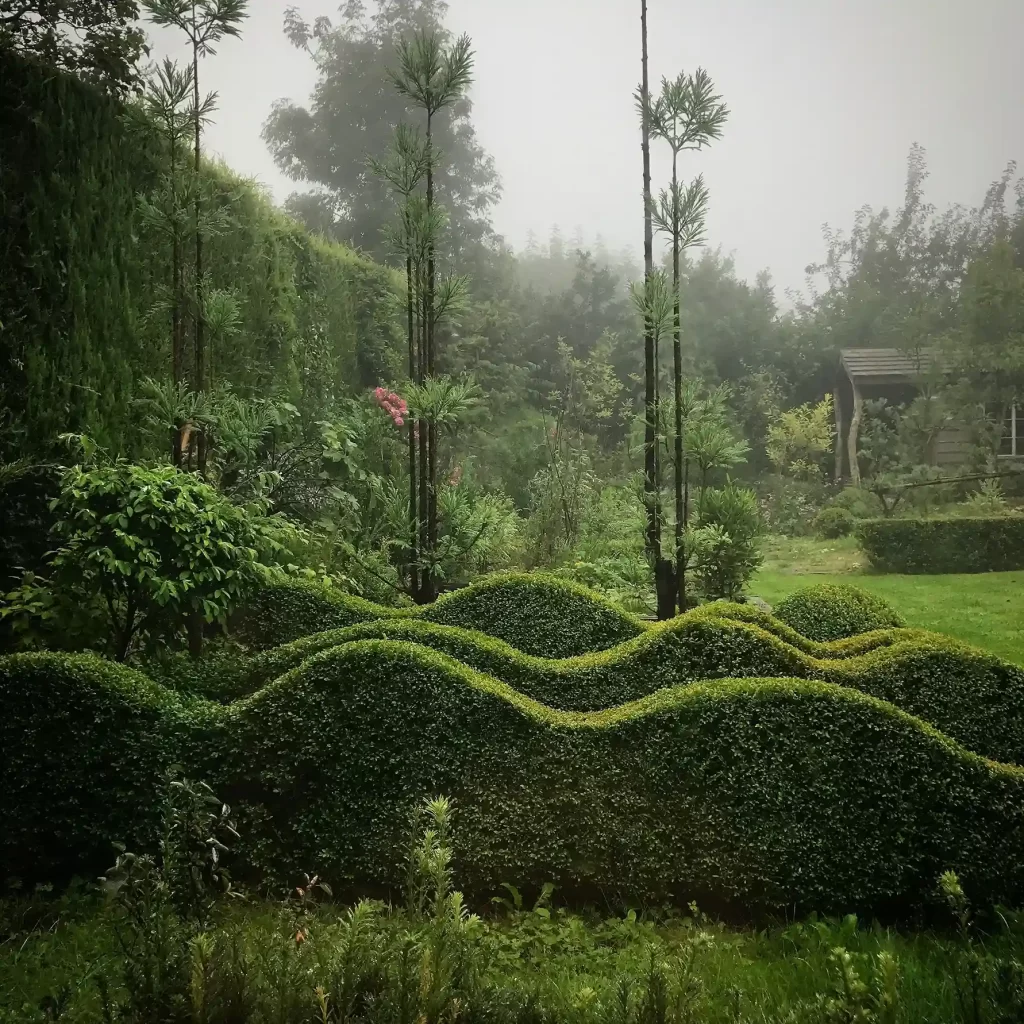
4. Spiral & Topiary Columns
Elevate individual shrubs within your fence into living sculptures.
- How to
- Select a single, healthy specimen (e.g., boxwood, yew).
- Insert a metal spiral frame around its stem, extending to the top.
- As it grows, weave and prune branches to fill the form, keeping foliage tight to the frame.
- Once established, remove the frame and maintain the spiral shape annually.
- Why it works
A spiral or column breaks the hedge’s linear repetition, creating focal points—perfect at entryways or corners.

🌺 Enhancing Your Living Fence
- Layering Plants: Combine different species for a multi-tiered effect.
- Incorporating Vines: Add climbing plants for additional coverage and aesthetics.
- Seasonal Interest: Select plants with varying bloom times and foliage colors.
- Wildlife Habitat: Choose species that provide food and shelter for birds and beneficial insects.
🌟 Fun Facts About Living Fence Plants
- Arborvitae: The name means “tree of life,” reflecting its evergreen nature and longevity.
- Willow: Known for its flexibility, willow branches can be woven into various shapes and structures.
- Bamboo: Some species can grow up to 35 inches in a single day under optimal conditions.
- Bougainvillea: The vibrant colors are not from the flowers but from the bracts, which are modified leaves.
📝 Conclusion
Building a living fence is a rewarding endeavor that combines functionality with natural beauty. By carefully selecting plants suited to your environment and maintaining them properly, you can create a sustainable and attractive boundary that enhances your landscape for years to come. Remember, patience and consistent care are key, as living fences take time to mature and fulfill their roles effectively. If you need recommendations on specific plant species suitable for your region or further guidance on maintenance practices, feel free to ask!
